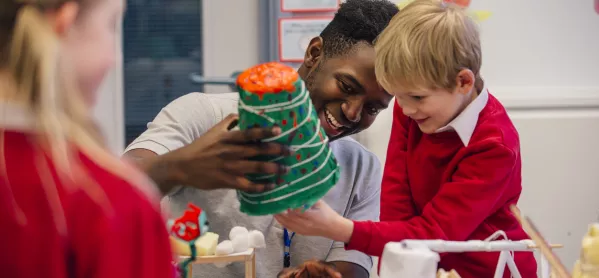The government is being urged to create a “level cultural playing field” for schoolchildren by making visual art a core part of the national curriculum.
Tate, a family of four art galleries in London, Liverpool and Cornwall, together with the Plus Tate network of museums and galleries, is calling for all pupils to have access to visual art through an “arts-rich curriculum” - following a sharp decline in pupils studying arts subjects in England.
It is also calling for the government’s planned new arts premium be implemented as a “matter of urgency”. The Conservative party pledged to invest in secondary arts education in its general election manifesto, with a vision to fund “enriching activities for all children” with an arts premium.
Exclusive: Cuts to arts in schools ‘a disaster,’ says Steve McQueen
Related: Ed Sheeran attacks cuts to music in schools
Viewpoint: Why we need an ‘arts premium’ in schools
Maria Balshaw, director of Tate, said: “Access to the visual arts in this country must not depend on social and economic advantage. Private schools place a premium on a rich cultural education for their pupils while many state schools are starved of the resources to support access to culture and creativity for their pupils.
“We need a level cultural playing field for all children because we want and need visually literate adults. There should be fair access to arts in line with the offer to pupils in Scotland and Wales, where the arts are already a core commitment.
“Hard-working teachers are too often thwarted in their aspiration to provide an arts-rich education by the restriction of the curriculum and the dire lack of resources.”
Art and design is currently classed as a “foundation subject”, rather than a “core subject” in the national curriculum. This means it is not compulsory after the age of 14. However all pupils in maintained schools have a statutory entitlement to be able to study at least one arts subject at GCSE. These include art and design, music, dance, drama and media arts.
The call for change comes shortly after the Year 3 project, created by Oscar-winning film director Steve McQueen, went on display at the Tate Britain.
It features 3,128 class photographs, which depict two-thirds of the city’s population of seven- to eight-year-olds. The aim was to create “a portrait of an entire age group of Londoners”.
Mr McQueen said: “The curriculum needs to be big enough to include all subjects and be for all children. Art and creativity are so important to science, to maths, or to any other academic venture.
“Cutting arts education means you cut off inventiveness, which impacts on being creative. We have many great artists, great thinkers and inventors in the UK and this has come through a sense of possibility. Arts education gives that sense of possibility. I hope Year 3 will spark opportunities for long-term creativity.”
Anna Cutler, director of learning and research at Tate, added: “Setting up the conditions for creativity in future generations is essential. Art does this with ease as well as being generative, collective and individual.
“We are delighted to be able to take this transformational step, working with teachers, schools and our Plus Tate partners and others, beyond Year 3. Instead of saying ‘Please sir, I want some more’, we need to say, ‘This isn’t good enough. We can and must do better.’”
Figures released by the Cultural Learning Alliance show there was a 10 per cent decline in pupils taking arts subjects at GCSE between 2017 and 2018. There has also been a continuing decline in uptake of arts A levels in England - down 24 per cent since 2010.
The Department for Education has been contacted for comment.





